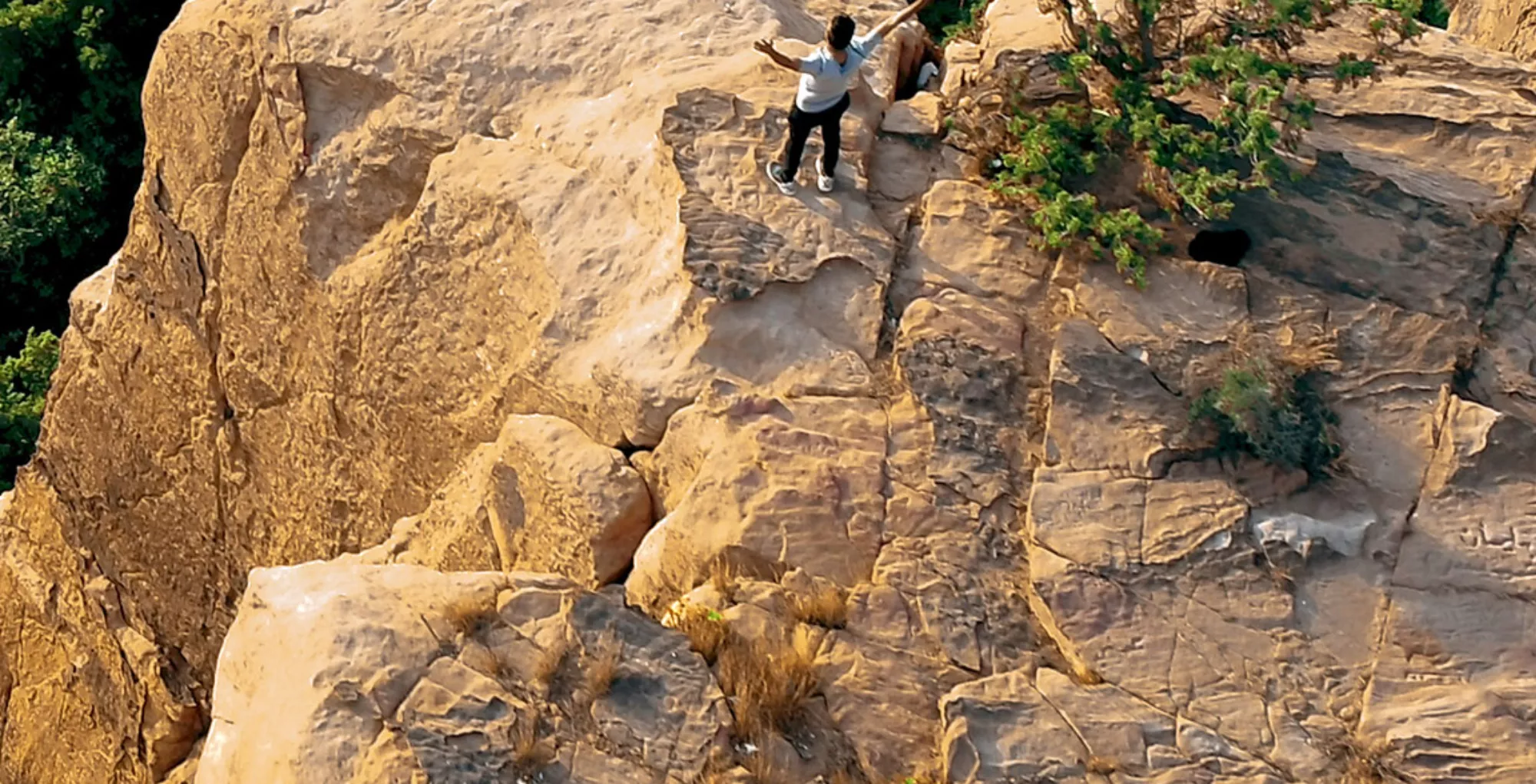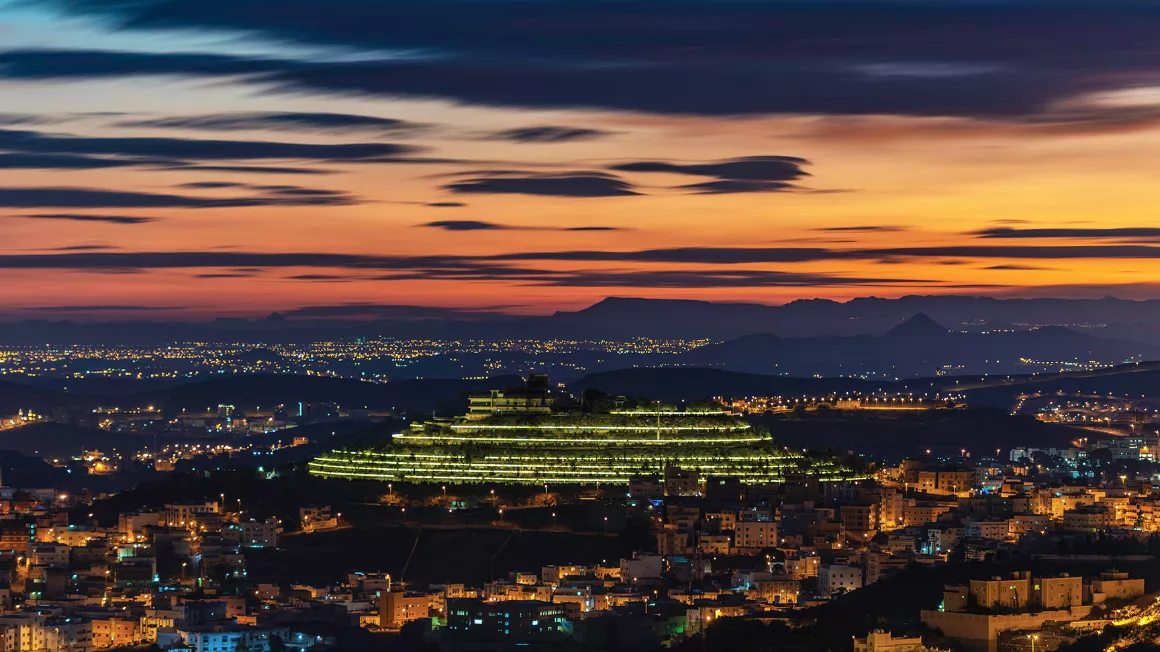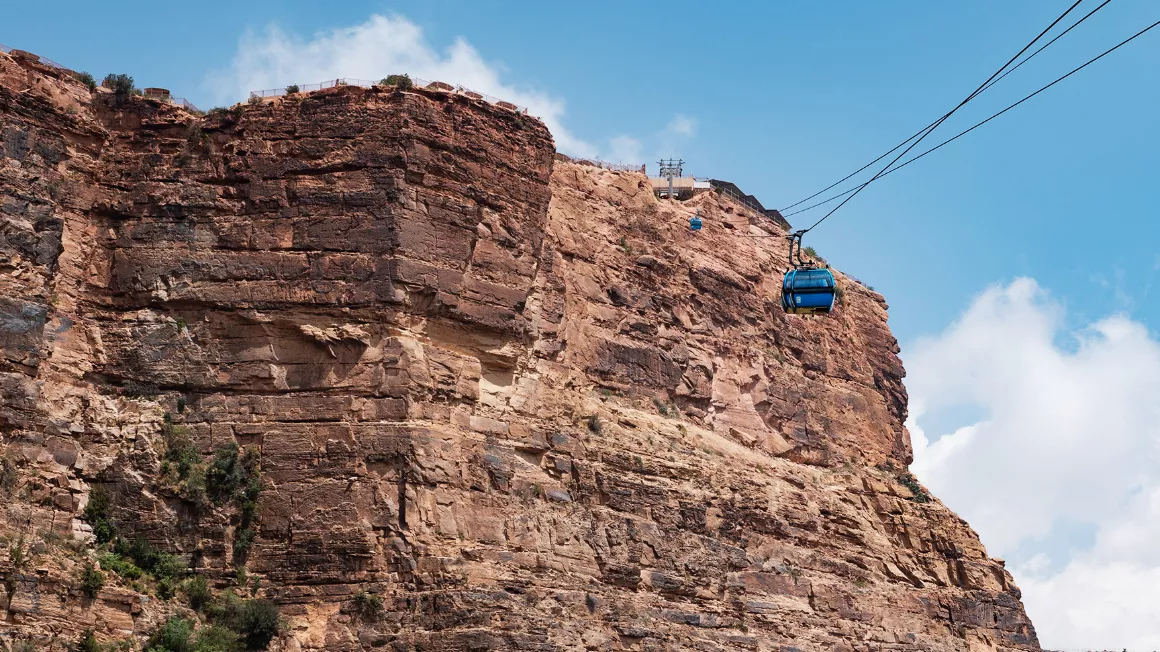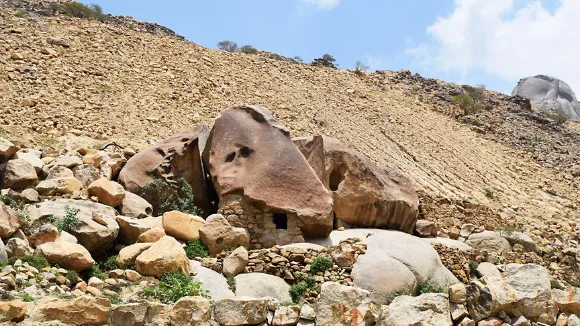

Smell the sharp, sweet scent of coniferous forests, gaze upon awe-inspiring views from atop mountains and feel the relief of cooler temperatures in Saudi’s southwest province of Aseer. The unspoiled wilderness throughout this mountainous region is begging for exploration, especially in Aseer National Park, which is home to more than 300 bird species. Traverse the park’s nature and camping trails by foot, or spend the night under the stars at one of its more than 60 campsites. As you continue your journey through Aseer, immerse yourself in local culture at Al Muftaha art village, or shop in vibrant traditional markets in the capital city of Abha or its sister city, Khamis Mushait.

One of Saudi’s more curious landmarks is Jabal Thera. Better known as the Green Mountain, this peak in the south of Abha is illuminated at night by neon green lights that emit a warm emerald glow across the city. Cable cars are the best way to get to the summit, where you can enjoy panoramic views from a restaurant and cafe with a terrace.

The hanging village of Al Habala is as fun to travel to as it is to explore. The village is composed of a series of sandstone homes perched on the ledge of a sheer cliff, built almost 400 years ago by the Qahtan tribe, who reached the secluded spot by rope ladder. (The name comes from “habal,” the Arabic term for rope.) They lived here self-sufficiently as terrace farmers until the 1980s. Today, there’s a cable car to the village from May to October, and visitors are greeted at the top by Qahtani men wearing traditional flower garlands.

Drive north through the scenic Sarawat Mountains toward Al Baha and the Shada mountain formation, or Jabal Shada, for a trip through history. The area, composed of giant granite rocks, dates back hundreds of millions of years, to before the Cambrian Period. While there, visitors may stumble upon exotic grottoes and caves that are the result of erosion that has taken place over centuries. Although the caves were created by geological phenomena, they happened to suit humans and were therefore used as dwellings. Engravings left behind by early civilizations have been found in the caves, giving archaeologists and researchers insight into the past. While exploring — and possibly staying in — the caves, consider sampling the region’s signature honey and ghee dish along with freshly baked bread and local Shadawi coffee.